Neodymium vs Ceramic Magnets
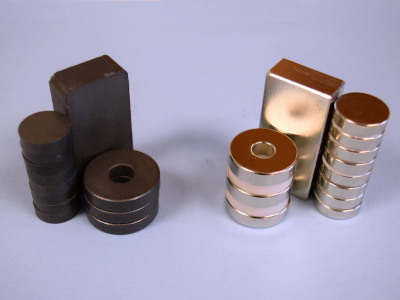
In the world of permanent magnets, there are several different materials - ceramic (ferrite), AlNiCo, Samarium Cobalt (SmCo), bonded neodymium, and sintered neodymium. We specialize in and supply sintered neodymium magnets.
In our opinion, the two most common types are ceramic and sintered neodymium. In this article, we'll compare the two materials, talk about the pros and cons of each, and ultimately show how neodymium magnets are superior (we might be a little biased).
Interested in replacing a ceramic magnet with a neodymium magnet? Email our engineers, we'd be happy to discuss the potential options and advantages.
Material Specifications
Let's compare the main specs of ceramic magnets and sintered neodymium magnets. Rather than list out all of the available "grades", we'll provide a range of grades and their specs.
|
Material
|
Grades
|
BH(max)
|
Coercive Force
|
MaxOpTemp
|
Curie Temp
|
Plating
|
|
Ceramic/Ferrite
|
C1-8
|
1.05-3.5 MGOe
|
2.5-4.0 KOe
|
250°C
|
450°C
|
None, Rubber, PTFE, Nickel, Epoxy
|
|
Sintered Neodymium
|
N30-N52
|
30-52 MGOe
|
12-34 KOe
|
80-220°C
|
310-350°C
|
Nickel, Black Nickel, Silver, Gold, Epoxy, Plastic, Rubber, Zinc
|
What do each of these mean (in layman's terms please)?
- BHmax - A single number that describes the strength of a magnet. It also happens to be the "N" number in neodymium magnet grades (N35, N42, N52, etc).
- Coercive Force - Resistance to demagnetization. The higher the number, the more resistance to demagnetization.
- MaxOpTemp - Also known as maximum service temperature, is the temperature at which the magnet may be exposed to continuously with no significant long-range instability or structural changes. Above the max operating temp, magnets will start to lose their strength.
- Curie Temp - The temperature at which a magnet loses all of its magnetic properties.
- Plating- What the magnet can be coated/plated with, to avoid corrosion.
See our Glossary for more definitions.
Compare Specifications
BHmax - This is a single number that describes the strength of the material, but practical pull force is also determined by the size and shape of the magnet. However, using the BHmax number, we can infer the difference in strength between the two materials. For example, taking the strongest grade of each material, C8 vs N52, we can assume that N52 is 6.5 times stronger than C8, based on the BHmax spec.
Let's look at a practical example of this. In the photo below, we have a 0.7" dia x 0.2" thick C8 ceramic magnet. When directly attracting to a steel plate, it has a pull force between 2-3 lb. The same size neodymium magnet, our DCH2, has a pull force of 16 lb...that's quite a difference!
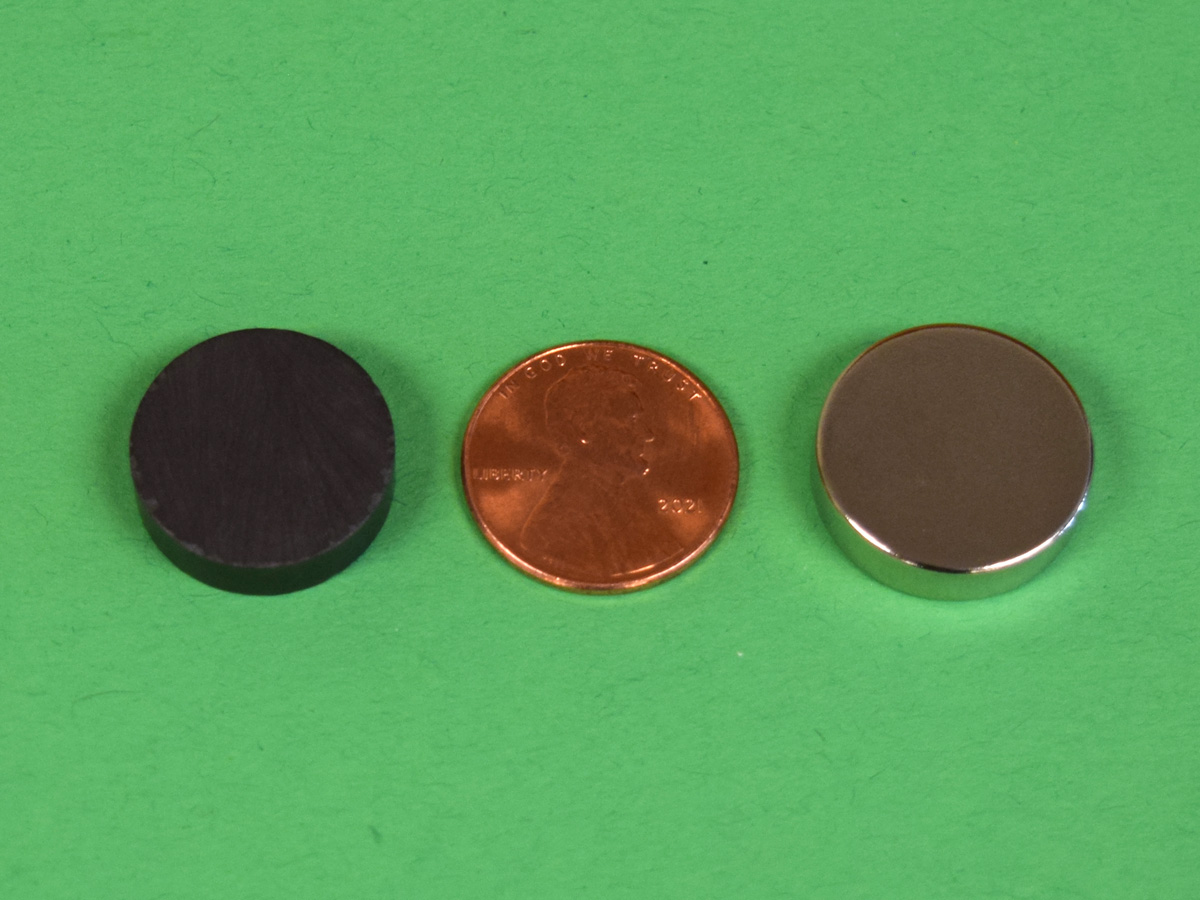
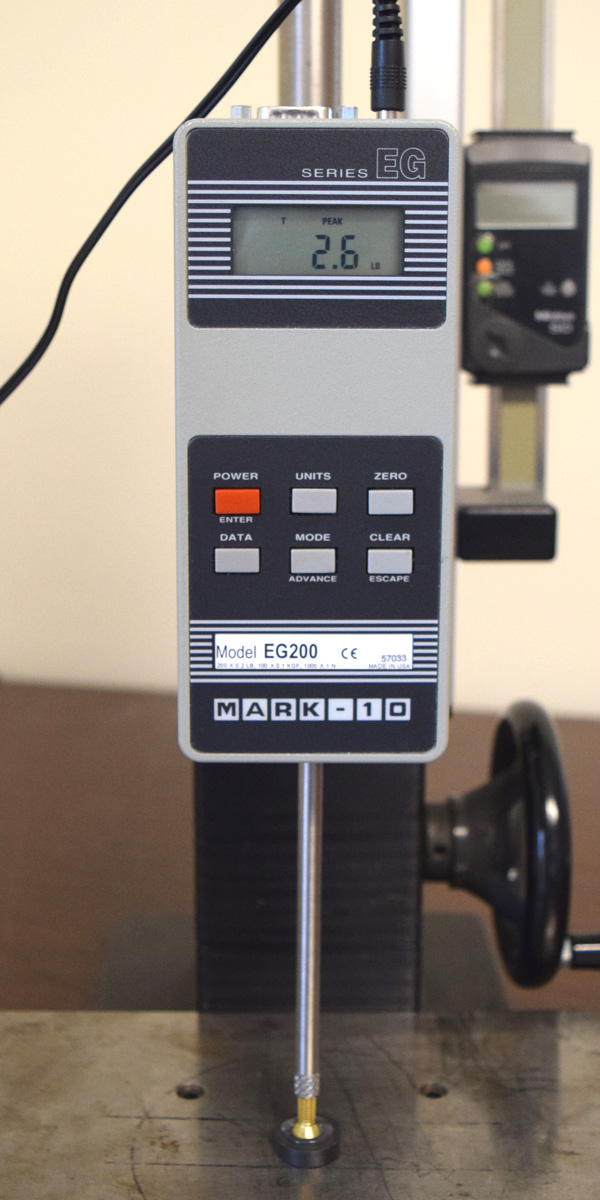
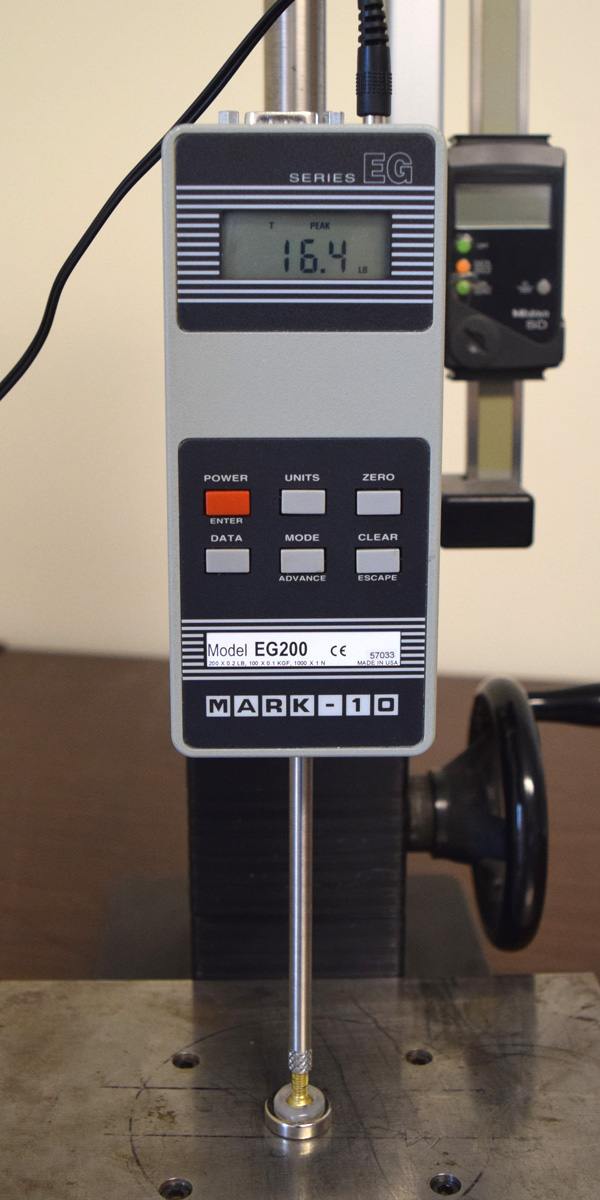
Coercive force - Neodymium magnets have a much higher coercive force, that is, a higher resistance to demagnetization. It takes a huge external magnetic field to demagnetize a neodymium magnet. The same cannot be said for ceramic magnets. In fact, a strong neodymium can demagnetize a ceramic magnet (see it happen in our video above). Ceramic magnets can also demagnetize themselves under the right conditions.
In our Fix a Ceramic Magnet article, we even use two neodymium magnets to remagnetize a ceramic magnet.
A neodymium magnet will only lose about 1% of their strength every 10 years, assuming they aren't heated above their max operating temp, or damaged.
MaxOpTemp/Curie Temp - The maximum operating/working temperature of a magnet depends on the grade and the magnet shape. We discuss this in our Temperature article. Taller cylinder shapes can have a higher max operating temp compared to thin discs.
This is one area that ceramic magnets have a slight advantage over neodymium. Generally speaking, ceramic magnets can withstand higher temps without being completely demagnetized. There are high temperature neodymium magnet grades, which can withstand as high as 220°C. K&J does carry some of these high temp grades!
Plating -The majority of ceramic magnets you'll see do not have a plating, mostly because it's not necessary for corrosion protection. Unplated ceramic magnets can withstand wet environments without corroding. Any plating that is added is typically for aesthetics, or to help contain the ceramic dust that can be associated with ceramic magnets.
Neodymium magnets need a plating to prevent corrosion. The material is nearly 2/3 iron, so an unplated magnet will corrode quickly in the presence of moisture. In most applications, our standard nickel plating is sufficient. For wet areas, an epoxy coating can add an extra layer of protection. For underwater applications, a plastic coating is the only suitable, long-term option.
Pros vs Cons

1. Price
Perhaps the first consideration in any project is cost, and at first glance, ceramic magnets definitely have neodymium magnets beat in this category. Ceramic magnets are the most cost effective permanent magnet solution. However, if you're looking for the best pull force vs cost, neodymium magnets usually win in that category.
For example, our 0.5" dia x 0.125" thick D82 has a pull force of 6.44 lb and is $0.99 if you only buy one. We looked around at several ceramic magnet suppliers, all have different pricing, so we'll just pick one for this example. One of their ceramic magnets is 0.710" dia x 0.250" thick and has a listed pull force of 1 lb, and it is $0.34 if you only buy one.
In this example, you get about 6.5 lb of force per $1 for neodymium, and about 3.4 lb of force per $1 for the ceramic magnet. We did this same thing for a few other sizes/ceramic suppliers and found similar results. Advantage neodymium.

2. Magnetic Strength
The most obvious difference is the strength of the magnets. The weakest grade of neodymium can be 5-6 times stronger than the strongest grade of ceramic magnets. Neodymium is unmatched in this category.

3. Longevity
What about longevity? In terms of magnetism, neodymium wins in this category. We often receive emails stating that a ceramic magnet has lost it's strength, and the customer either needs to remagnetize it, or replace it with a neodymium magnet. When using a neodymium magnet in your application, you'll likely never have to replace due to loss of strength, unless the magnet is heated above it's max operating temp, is damaged, or corrodes. Advantage neodymium.
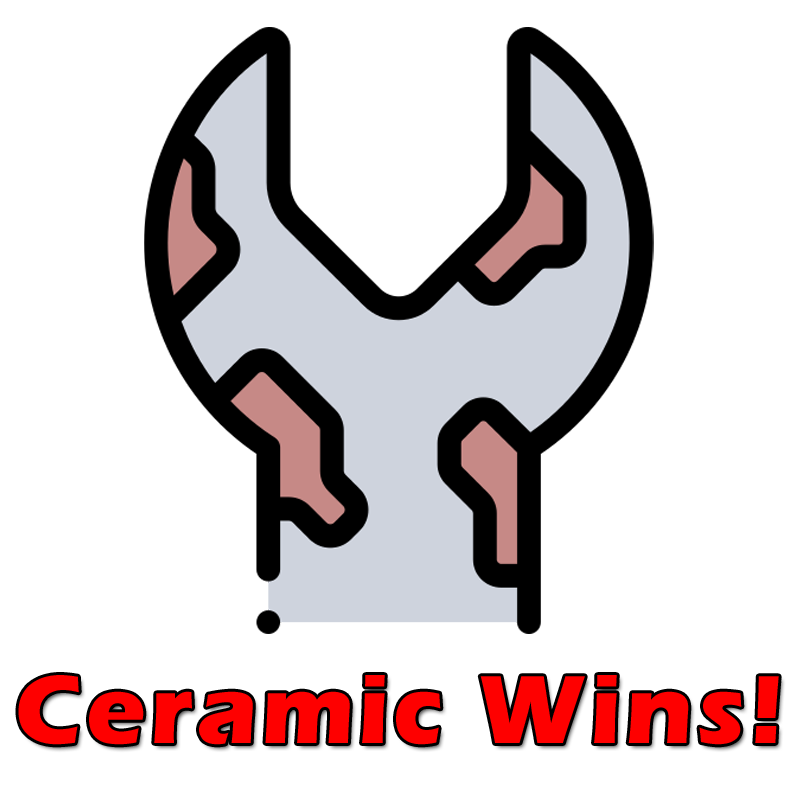
4. Corrosion Resistance
Speaking of corrosion, a common, unplated ceramic magnet does have better corrosion resistance compared to a nickel plated neodymium magnet. Advantage ceramic.

5. Fragility
And what about damage? Both ceramic and neodymium magnets can be broken, though neodymium is a harder, more brittle material. Pair this with the strength of neodymium magnets, and neodymium magnets can break each other if allowed to attract together freely. We discuss this in our Breaking Magnets article. Ceramic magnets can also break from impact, but it's usually not from two ceramic magnets attracting together (because their force is weak). Tie.

6. Temperature Resistance
Ceramic magnets can have better temperature resistance, though there are high temp grades of neodymium available. To the best of our knowledge, there aren't specific high temp grades of ceramic magnets. The 250°C spec listed in the table above for ceramic magnets is a general spec, we've found other information which states that above 150°C, the ceramic magnet will only have about 25% of it's strength at the elevated temp...for the already weak magnets, this isn't great. Considering there are grades of neodymium that have similar temperature properties, we'll call this one a tie.
Why neodymium?
While ceramic magnets do have their place (yeah...in a dumpster!), the development of neodymium magnets changed the industry. Neodymium magnets are key to making products like motors, hard drives, electronics, commercial equipment, etc, more efficient, and smaller. Neodymium magnets are so much stronger, which means in a motor or generator, there is a higher output, with the same input.
There is also much more force available in a smaller space, so products can be made smaller - this means using less material, which is good for cost savings, and our limited resources. Neodymium magnets will also last forever, so less waste as well.
For these reasons (and more), K&J Magnetics chooses to only supply sintered neodymium magnets. We're proud of the products we provide and how they can make the products we use so much better. Magnets are everywhere, and are key to the future development of crucial technologies.
Interested in replacing a ceramic magnet with a neodymium magnet? Email our engineers, we'd be happy to discuss the potential options and advantages.
Best price icons created by tulpahn - Flaticon
Strength, clock, rust, fragile and temperature icons created by Freepik - Flaticon
